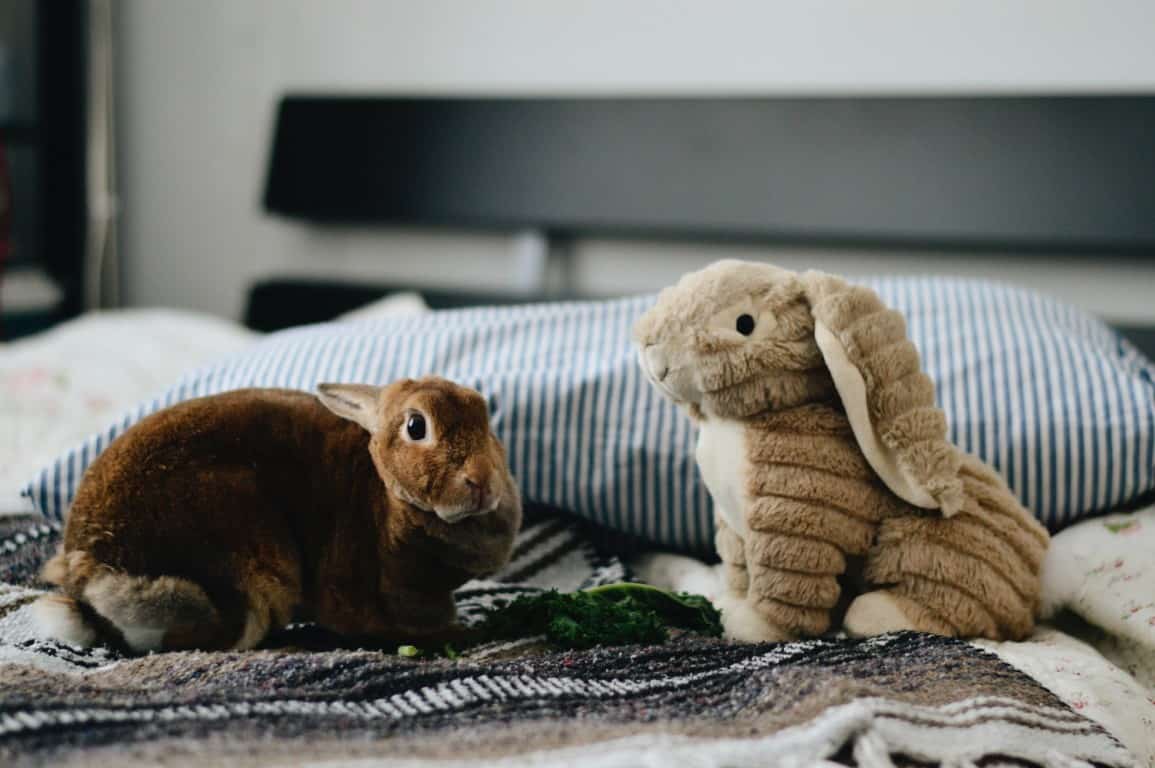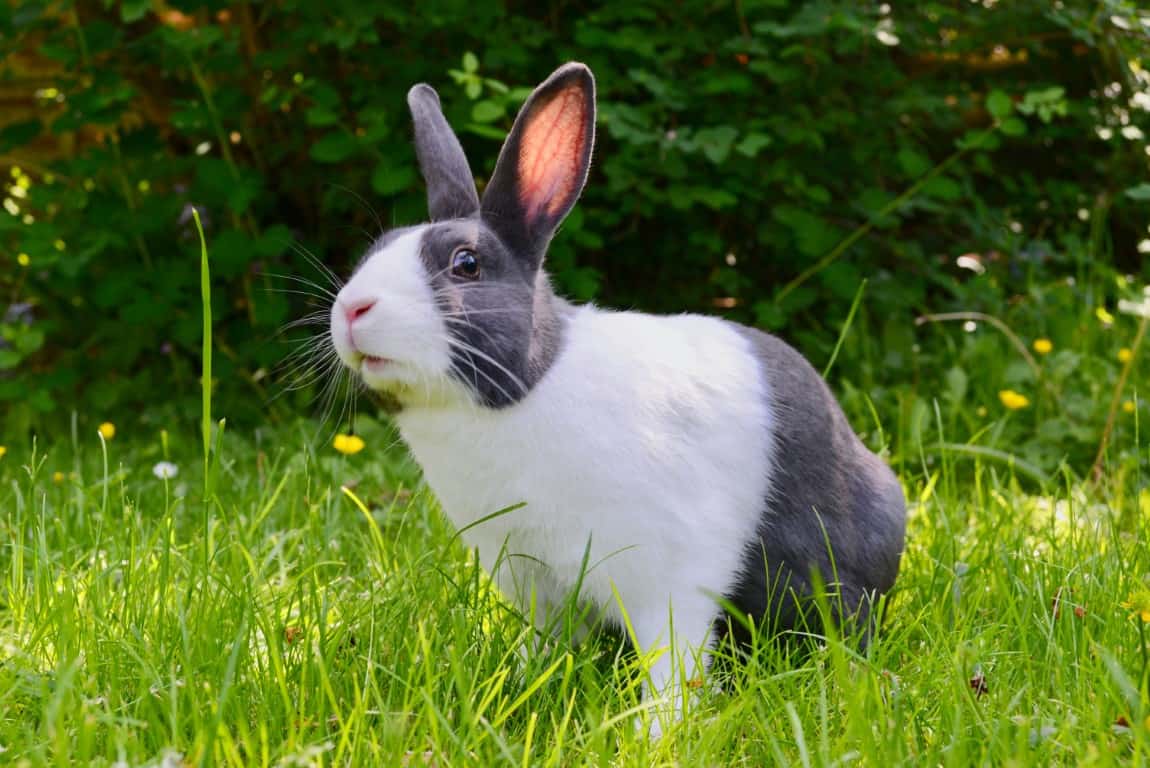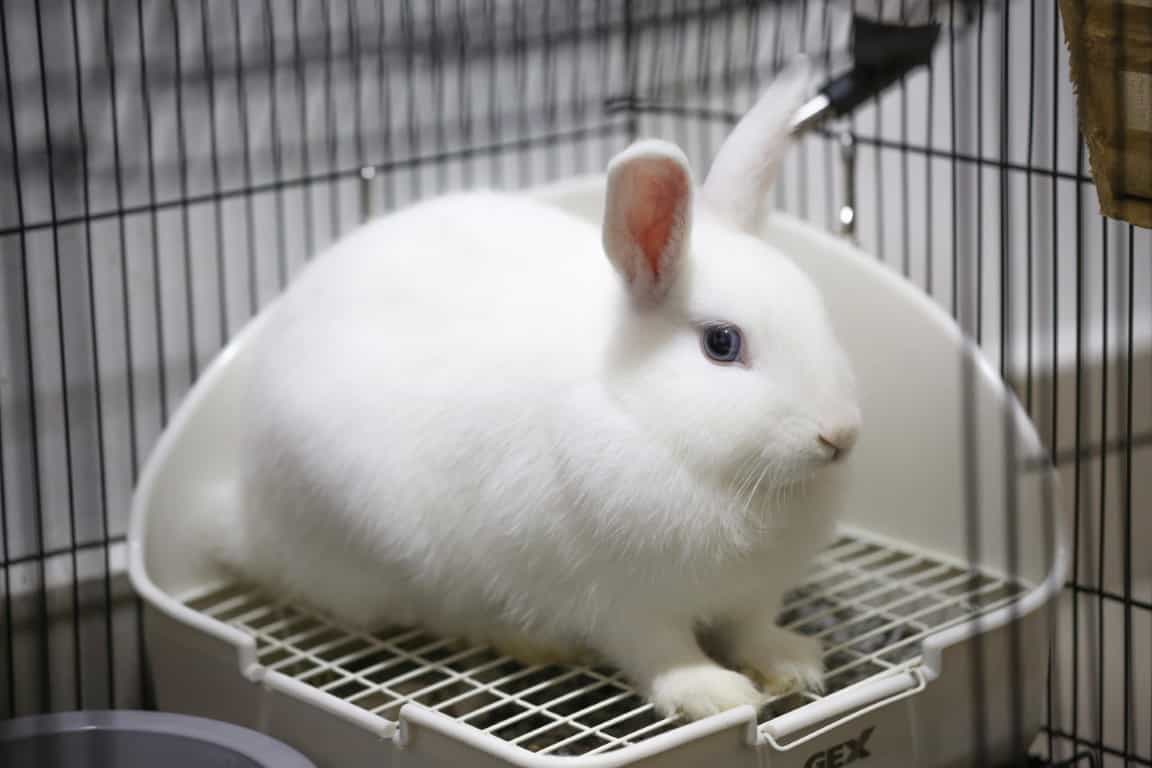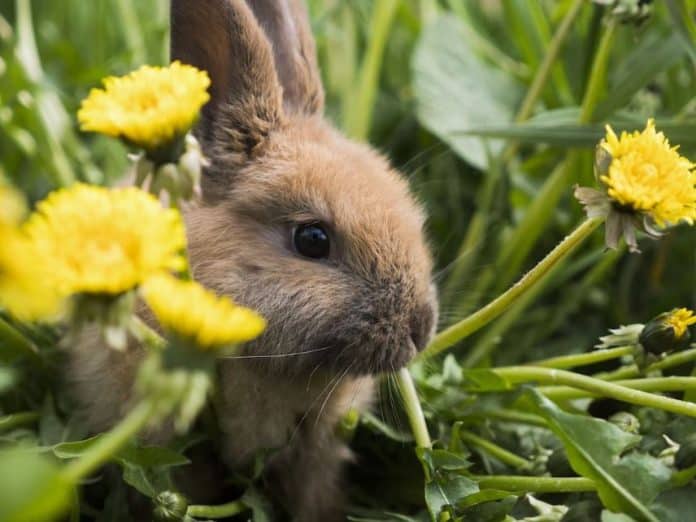The environment of a rabbit includes all places that it has access to, not only the places where it sleeps, eats, exercises, and relieves itself. The environment also includes all the things a rabbit interacts with and the things it needs, including bedding, that it needs to stay healthy and happy.
A rabbit should have access to suitable places and supplies to:
- rest and sleep in comfort
- eat and drink undisturbed
- exercise and explore safely
- hide when afraid or feeling insecure
- shelter from the weather (wind, rain and sun)
- play
- Chew on minerals whenever it feels the need
- mark its scent on solid objects
Resting areas for rabbit

A rabbit requires a resting area and an exercise area.
Your rabbit’s resting area should have at least two compartments.
A quiet, enclosed space where your rabbit can sleep away from the commotion, and another where it can eat and relax. The optimal location for the resting space is to be permanently affixed to an outside space for exercise that the rabbit is always free to visit.
The resting area should be as large as possible. At least:
- large enough for your rabbit to lie down and comfortably spread out in every direction.
- high enough for it to fully extend its back legs and stand upright without touching the top with its ears.
- long enough so that it can move around, eat and drink
Your rabbit should, at the very least, be able to hop three times from one end to the other. When fully grown, an average rabbit can measure between 150 and 180 cm long and 60 cm tall.
If your rabbit lives outside

Rabbits can be kept outside throughout the year, but ideally, they should have a resting spot that is in a shed or unused garage with plenty of natural light and ventilation.
If you are planning to keep your rabbits outdoors, make sure the resting area is:
- draught-free and fully weatherproof
- placed in a sheltered position (out of the direct sun and prevailing wind)
- sturdy and easy to clean
- protected from predators (wild dogs/cats)
- fitted with secure catches to prevent escape or theft
Keeping your rabbit inside

Rabbits can live pretty contentedly indoors, therefore it is important to provide them with safe surroundings where they can rest, use a specific area as a toilet, and remain contained when left alone.
When releasing rabbits indoors, special care should be taken to prevent them from accessing locations with electrical lines that they could gnaw through such as a chew stick. Given that rabbits are susceptible to heat stroke, care should be taken to consider where their housing is located because it may have negative health effects.
Bedding for rabbits
To provide your rabbit with extra insulation, a place to hide, and something to chew on, you should supply bedding. It should be safe for your rabbit to eat, clean, and dry. You can use hay and straw. Wood shavings are unsuitable for use as bedding.
Exercise for rabbits – run

Rabbits are highly energetic, athletic creatures. They need to be able to crawl, hop, and run to exercise properly. Rabbits maintain bone and muscular strength by jumping on and off raised surfaces like solid platforms. If your rabbit isn’t getting enough exercise, its bones may weaken and break.
Your rabbit should have daily access to a run. The run should:
- be as large as possible to allow your rabbit to stretch upwards to full height and to run, as opposed to just hop
- contain raised areas for jumping and preferably should be outside with access to a grassy area
- be moved regularly to avoid any chance of burrowing out or overgrazing grass
- be escape-proof and secure enough to prevent any threat from predators
- provide shade and protection from the wind and rain if the living area has been brought into a shed or garage
Rocks, large terracotta plant pots, logs and chew toys can be provided within the run to prevent boredom.
Hygiene for rabbits

Part of providing a suitable environment is making sure that it is safe, clean and hygienic.
Newspaper or shredded paper should be used as a toilet area. Alternatively, a litter tray can be provided with non-clumping, non-toxic material. Wood shavings containing pine or clay-based cat litter should not be used as they can be hazardous to rabbits.
Your rabbit’s living area should be cleaned daily. You should:
- remove and replace any shavings or bedding that are wet or dirty
- remove any uneaten fresh foods
- thoroughly clean water and food containers before refilling
The entire living area should be cleaned thoroughly at least once a week but as often as necessary to maintain a clean hygienic environment for your rabbit.
You should:
- use a good quality, pet-friendly disinfectant that, if necessary, you rinse off and allow to dry before allowing your rabbit to enter
- replace all bedding and shavings – it may be useful to leave some used but clean bedding so your rabbit feels safe, by recognising its scent
Whether your rabbit resides inside the house or outside, they need a safe environment and protection from danger.
Listed down below are some products you might be interested in, get them today!
- Enriched Life – Play Centre (Large) https://www.petloverscentre.com.my/products/enriched-life-play-centre-large
- Enriched Life – Woven Hideout (Large) – https://www.petloverscentre.com.my/products/enriched-life-woven-hideout-large
- Trustie Ultra Soft Pet Bedding – https://www.petloverscentre.com.my/products/ultra-soft-pet-bedding-white-600g-10-litre
- Enriched Life – Stix & Hay – https://www.petloverscentre.com.my/products/enriched-life-stix-hay
- Timothy Tunnel for small animals – https://www.petloverscentre.com.my/products/tunnel-for-small-animal



